NZXT H630 Silent Case Review
by Dustin Sklavos on May 14, 2013 10:00 AM EST- Posted in
- Cases/Cooling/PSUs
- NZXT
- ATX
Noise and Thermal Testing
I've mentioned before that when I go into actually testing a case, I generally have a decent idea of how it's going to perform. That wasn't true with the NZXT H630, though; most silent cases use some combination of 120mm or 140mm fans for the front intake and then a single one in the rear. In the H630, on the other hand, NZXT used a massive 200mm intake fan. At the same time, though, I was skeptical as to whether or not the ventilation in the front would really be adequate.
Our stock testing configuration is in many ways a best case solution (no pun intended) for testing silent cases, as the hardware isn't being pushed too hard and the sound-dampening materials are allowed to do their job. Unusually, NZXT doesn't include fan control with the H630, instead opting to just try to include quiet fans in the first place.
Ambient temperature was roughly 23C during testing.
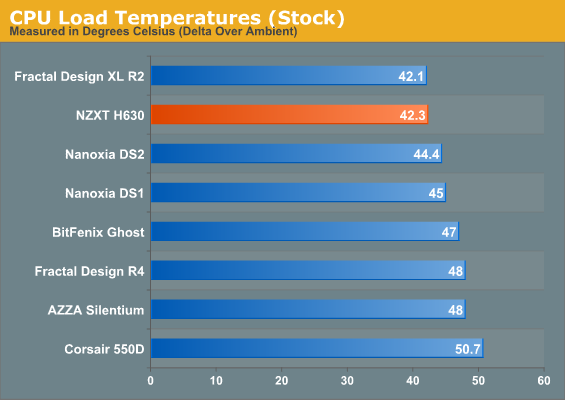
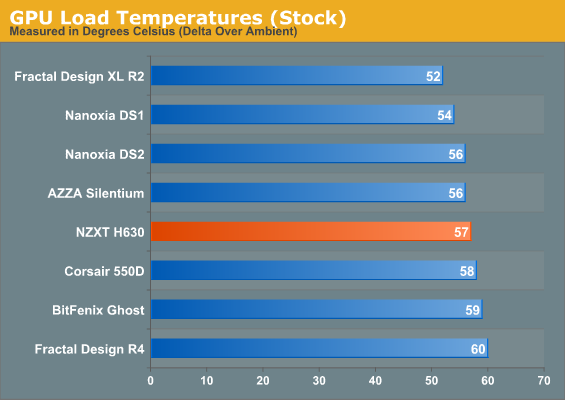
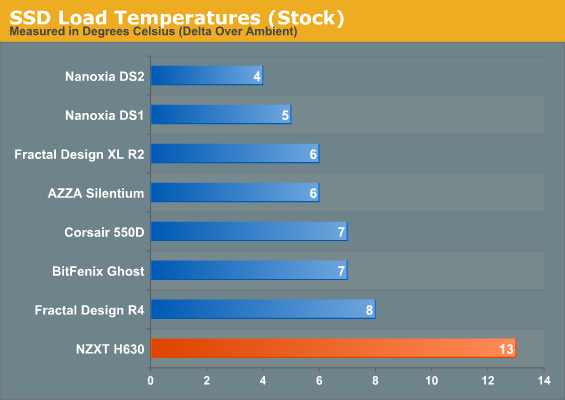
Stock thermals are generally good. The SSD is running toasty, but it has no direct airflow behind the motherboard tray, and it's still well below spec. The queen bee that NZXT has to contend with is the Nanoxia Deep Silence 1 (as well as the Deep Silence 2); while the DS1 doesn't offer exceptional performance in the standings, it has a stellar blend of thermals and acoustics and handles that balancing act very well.
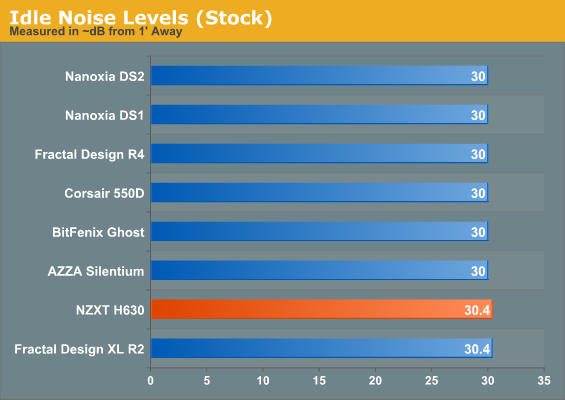
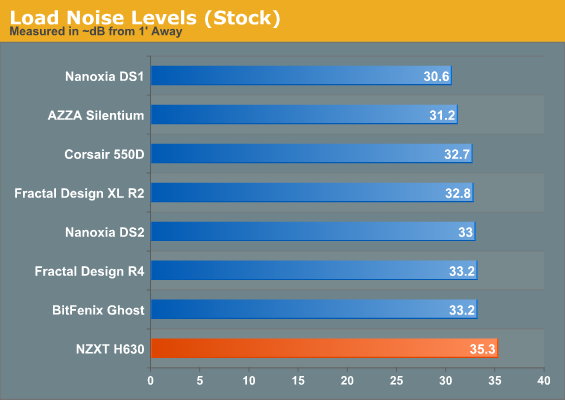
Unfortunately, fan noise is a real problem for the H630. Interestingly, though I was of the impression that there wasn't enough ventilation for the H630, I might have been wrong. The H630 is the loudest "silent" case I've tested under load. This is one of those places where Nanoxia's Deep Silence 1's chimney turns out to be a killer feature; the design of it muffles noise without crippling airflow.
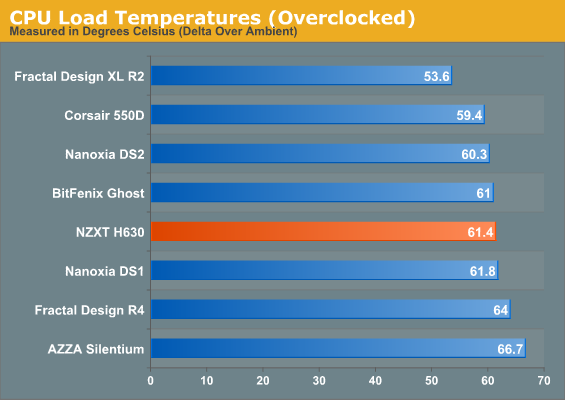
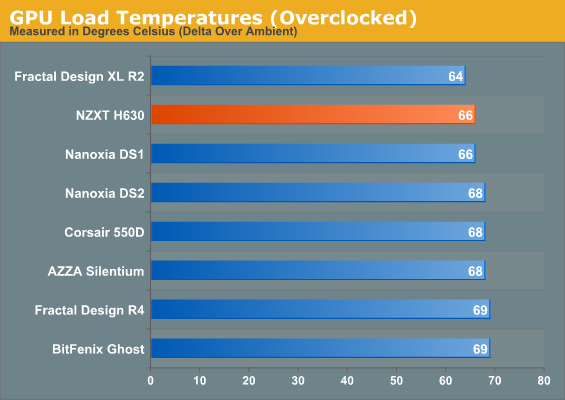
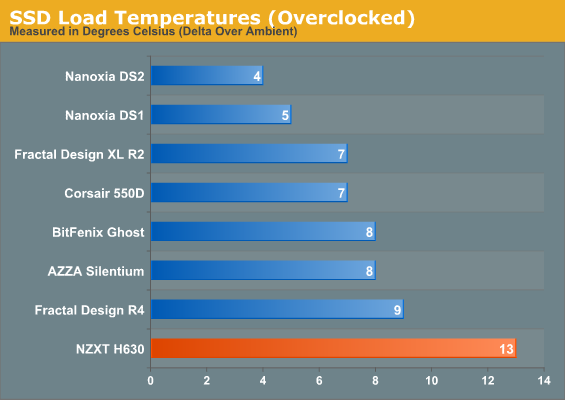
Our overclocked testbed's thermals are where the screws start really getting put to the H630. Thermally it keeps pace with the Deep Silence 1, though Fractal Design's competing Define XL R2 puts in a much stronger showing.
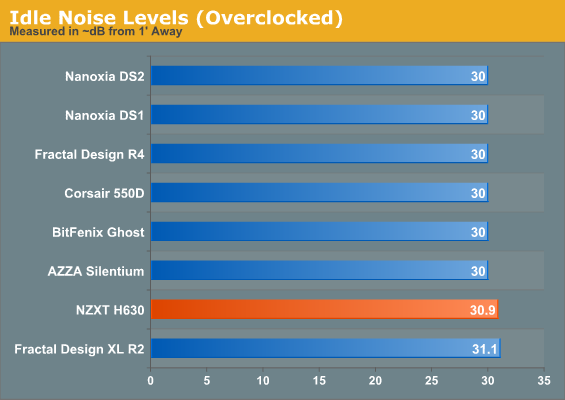

Interestingly, the H630's fortunes turn when noise levels are measured. While idle noise remains less than ideal, load noise is surprisingly strong, even performing slightly better than the Deep Silence 1 and 2.
Unfortunately I don't have results for any of the silent cases we've tested using our freshly minted "full fat" testbed, so we'll have to see how the H630 fares against the other cases that were tested after we put together that bed. This is for all intents and purposes not a fair fight, but should at least be somewhat educational.

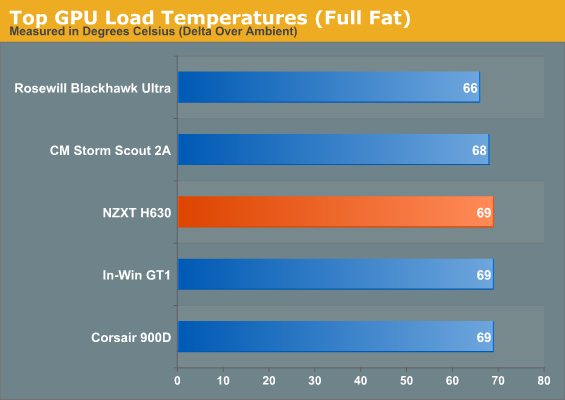
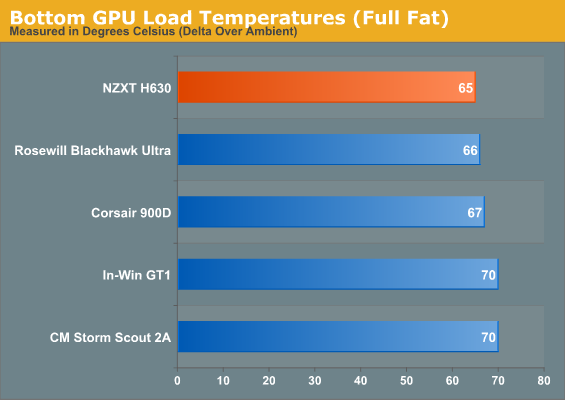
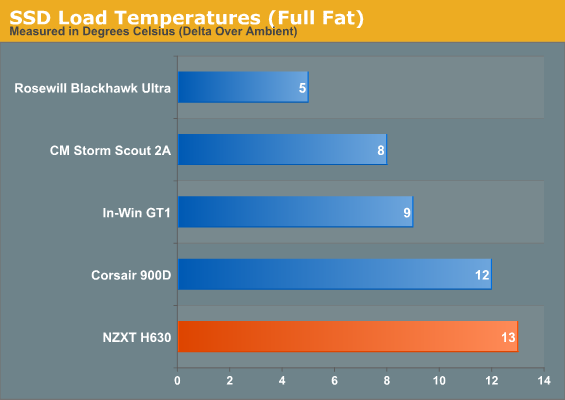
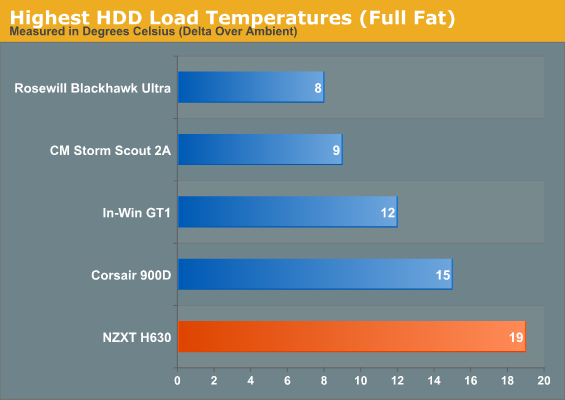
Results aren't great but they're not completely terrible either, and under the circumstances the H630 actually performs pretty admirably. Note that the hard drive thermals are a product of a conscious decision to employ the topmost hard drive cage instead of the bottom. I elected to keep airflow clear for the rest of the case as opposed to having cool air directly flow over the hard drives, and a small heat pocket does develop in the top without active air flow.
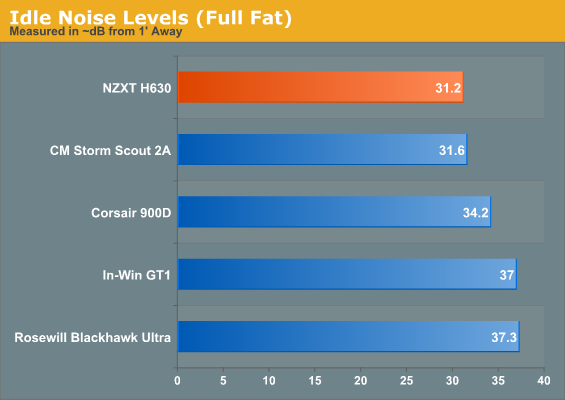
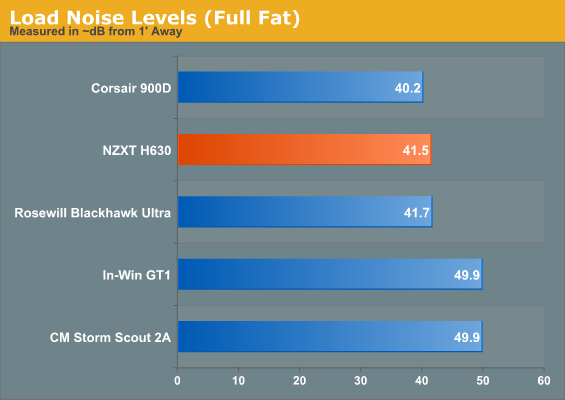
Noise levels aren't great, but they're actually very competitive, all things considered. NZXT targets the H630 for cooling and silencing high-powered components, and while it seems to have had at least some trouble doing that (as have the other competitors), it at least has potential.










27 Comments
View All Comments
Blibbax - Tuesday, May 14, 2013 - link
How is it louder at load stock than it is overclocked?Dustin Sklavos - Tuesday, May 14, 2013 - link
Margin of error.hero1 - Tuesday, May 14, 2013 - link
This is the case for me even though I already own the FDD XL R2 atm. I had posted on another site months ago asking for this exact type of case 3x120 front and top and 2x140 at the bottom, fewer front bays and sound dumping materials. Looks like NZXT listened and delivered. The acoustics are not a problem considering that I, and many others, will buy this case for water cooling builds. One thing I wish they did is have perforations on both sides of the door and get air from both directions.Trefugl - Tuesday, May 14, 2013 - link
I'm also interested in this case for use with watercooling. I was having a hard time trying to figure out how much room there is for a 3x120 on the front though... Can anyone comment on radiator mounting in this case?Dustin Sklavos - Tuesday, May 14, 2013 - link
You can pull the drive cages and mounts entirely to install a 3x120.hero1 - Thursday, May 16, 2013 - link
And that's what I intend to do with it. I wonder when we are going to see this beast in stock.hero1 - Thursday, May 16, 2013 - link
One thing I don't like about the FDD XL R2 is the thin sound deadening materials. I want something like 5mm thick. That way I can use a 5mm thick acrylic panel for a window mod. I hope they have thicker materials for this one!JDG1980 - Tuesday, May 14, 2013 - link
The Nanoxia DS1 would be a stronger competitor to the H630 if you could, you know, actually buy one.I understand that Anandtech can't test cases in every possible configuration, but I think results might have been better if the top drive cage had been removed (as was done on the Fractal Design Define R4 review), and the 200mm front fan moved from the bottom mount to the top. This would enable the intake airflow to cover a large portion of the motherboard, including the graphics card (if installed). In the configuration you use, the airflow mostly blows at the back end of the PSU. I have no idea why NZXT put the fan in the bottom mount by default; it doesn't make much sense to me.
I'd love to see how this does with the top drive cage removed and a Silverstone 180mm Air Penetrator in the top mount. (You might need zip-ties or extra holes drilled for this one, though.) The AP182 has its own analog fan controller, which would also help with noise.
Subyman - Tuesday, May 14, 2013 - link
Did anyone else think the top of the front panel looked like a giant hinge for a door? I was surprised when the author noted that it did not have a door. I thought those two openings on the front folded down when the optical drive came out. I really like my 550D, door and all ;)angryblanket - Tuesday, May 14, 2013 - link
Very subtle and not flashy, just how I like em. Out of my price point though.